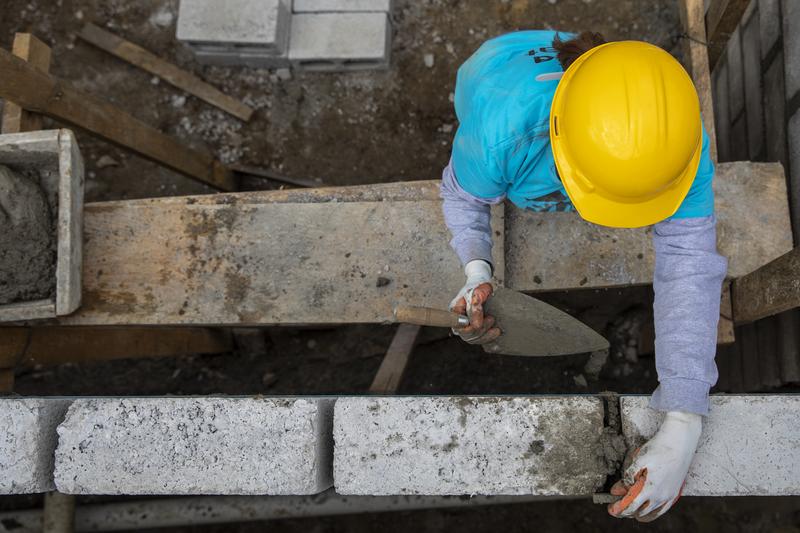The pandemic has left a devastating impact on people and industries across the world.
While data continues to be collected, it’s known that mental health has affected many either through feelings of isolation due to lockdowns or from efforts to juggle homeschooling, work tasks, and maintaining order around the house.
The tourism industry was all but wiped out as countries closed their borders, and travel remained off the cards for many people. Hospitality was also shut down, with restaurants and bars unable to serve patrons for months at a time.
Even though housing was an issue prior to the pandemic, the situation was exacerbated during this once in a lifetime event. So what were the impacts in Europe, and what’s the plan to address the problem? Here’s where the region currently stands on the topic of housing.
Housing in Europe Before the Pandemic
In 2019, approximately 17% of the European population lived in an overcrowded home, and the cost overburden rate was sitting at 9%. However, this figure increased to 35% for those with low incomes. It also varied significantly from country to country.

Tenants were impacted too. Just over 24% of renters paying at market rates were overburdened across Europe in 2019. The majority of these individuals lived in cities across the region, with numbers slightly dipping in town, suburbs, and rural areas.
While the quality of homes had improved, 4% of the European population resided in overcrowded places and were missing vital necessities such as toilets, baths, and even a safe roof over their heads. Homelessness was also rising, with numbers estimated at 700,000 people sleeping in emergency or temporary housing.
The Impact of COVID on Housing
Unfortunately, the full impacts of the housing sector are still getting collated. The pandemic affected providers in many different ways and to various extents. However, the biggest issue was the pause in the production of affordable housing buildings.
In France, there were two million pending applications for social housing at the beginning of 2021, with 750,000 in metropolitan locations. This is despite a 25% reduction in approvals 12 months earlier. With unemployment expected to rise, more applications for social housing are forecasted to be received over the next three years.
Meanwhile, in England, council waiting lists are expected to double in the next 12 months. In Czechia, one in eight people believe they will need to vacate their current home, and one in four are expected to move out of their rental. Italy has seen the rate of tenants in arrears go from less than 10% to 24% in a year.
Those currently in social housing are also suffering. With construction on hold, it impacted repairs and upgrades to existing buildings. Contractors are now playing catchup on requests and fixes to homes before starting work on new houses.
What Opportunities Were Identified?
Despite the decrease in the availability of affordable housing options, it provided the industry with an opportunity to reflect on what’s working and what could be improved. One example is common areas.
It was identified there was a lack of quality space to work, study, and even for children to play. The lack of outdoor space and access to green areas or balconies proved to be detrimental to many. For example, due to overcrowding and exposure to noise, it was found it had a negative impact on school performance and children’s development.
Energy performance has also become a focus. Due to people spending more time around the house, it has led to an increase in utility bills. Therefore, more efficient solutions are required for existing homes as well as newly built houses.
It will also need a more robust digital infrastructure due to the move to digitalisation. This means rolling out broadband for virtual home visits and online meetings with housing associations.

What’s the Plan for Affordable Housing in Europe?
Decisions around what to do to address affordable housing in the medium and long term are currently being discussed. The most significant concern is the impact the pandemic will have on incomes, which is likely to worsen the issues around affordability further.
Economic forecasts in Europe are already concerning as it has indicated a possible increase in poverty as well as economic and social inequalities.
The at-risk-of-poverty rate in Europe is expected to increase from 16% to 19%. However, this could reach 21% if no new policies are introduced to compensate for any potential income losses. Even though the European economy is due to recover, the unemployment rate is also expected to rise to 9% by the end of 2021.
The development of new affordable housing buildings is expected to increase. Renovations on existing properties are also planned across various countries. But, some long-term initiatives need to get drafted sooner rather than later to prepare for some of these developments and ensure that the situation doesn’t worsen.
Where Can You Learn More?
With several concerning forecasts coming out of many European cities, it’s time to put together a plan for affordable housing as part of the recovery efforts from the pandemic.
Whether it’s evolving the design of houses to include more outdoor spaces or rolling out broadband so more people can work from home, the sooner initiatives and policies are finalised, the faster some of these trends can be reversed.
The Europe Housing Forum is bringing together key decision-makers and stakeholders in the housing industry virtually to discuss how to build a sustainable future for everyone and get the issue of housing to the forefront of the agenda in Europe.
It will also be an opportunity to learn from one another and share ideas on how a difference can be made. If you want to be part of the conversation, join us at the Europe Housing Forum between November 16-19th , register at www.europehousingforum.eu/registration.


